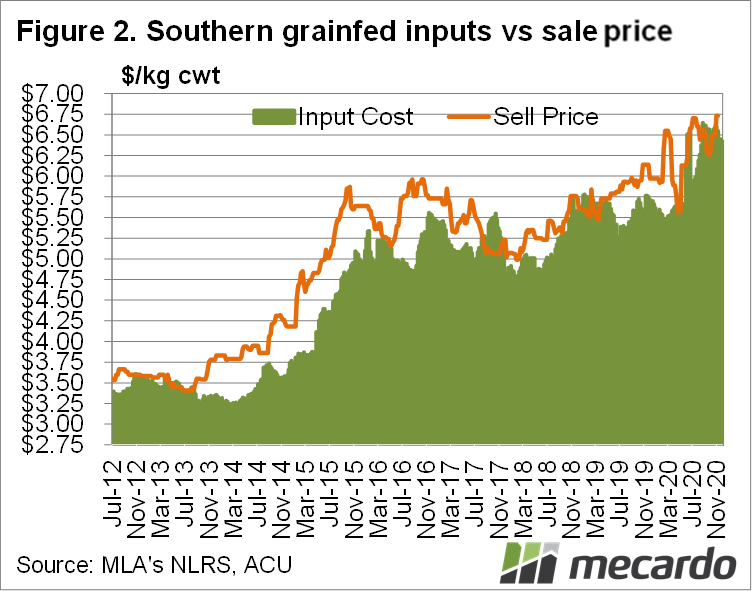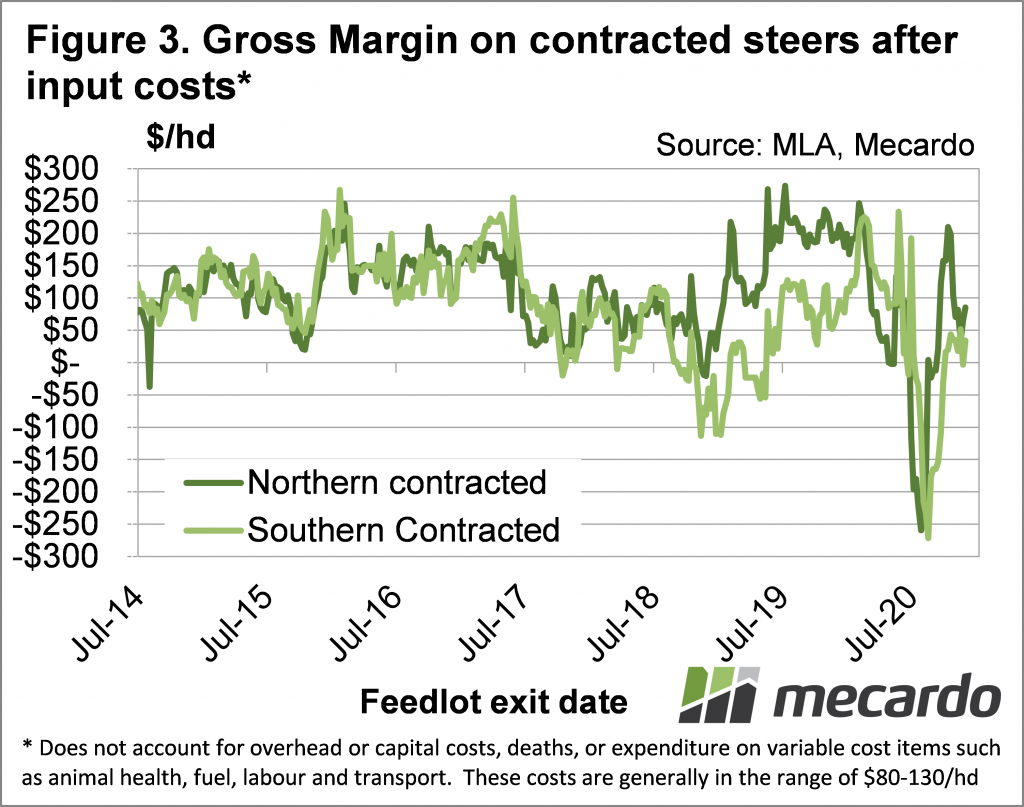Finished cattle markets have not been as crazy as store markets, as processors don’t get caught up in ‘Grass Fever’. However, last week we did see the Queensland Grainfed 100 Day Steer Indicator hit a new record, as it had to in order to keep cattle coming through feedlots.
The rise and rise of the Eastern Young Cattle Indicator (EYCI) kept going last week, a new record of 827¢/kg cwt being reached. Rising young cattle prices have obviously put pressure on lotfeeders, who are now having to compete with restockers moving into heavier weight ranges in order to find something to eat abundant grass.
The official export feeder quotes have been on the rise for shortfed feeders, which have risen in increments from 368¢/kg lwt at the start of July, to 393¢ in August and September, and then to 420¢ in October. Shortfed feeders are now slightly more expensive than Mediumfed Feeders, which have been stuck at around 415¢/kg lwt since May.
There has been some positive price movement for lotfeeders on the input side, with old crop grain prices easing as we move towards the new crop. In both northern and southern zones feed wheat is now in the low $300/t range, with barley coming in cheaper again.
The Queensland 100 day Grainfed Steer Indicator last week reached a new high of 673¢/kg cwt. The 100 day Steer is only 3¢ higher than the previous peak seen in July, but the 23¢ rise seen in late October added roughly $80 per head and pushed gross margins back into the black.
Figures 1 and 2 shows how the two main input prices, and the output price have moved in recent months, with the sell price generally tracking just above the break-even price in the north, while it dipped below in the south for a couple of months.
Figure 3 shows the gross margins before overheads, and 2020 has been an extremely volatile year. Increasing Grainfed steer prices have moved the margins indicated here from highly negative, back to a small positive.
What does it mean?
There is still very little in lotfeeding after overheads, so we don’t expect rising grain finished cattle prices to have too much impact on feeder values in the current markets. There could be some more relief in grain prices for lotfeeders as harvest rolls south, which could see a bit more upside for feeder cattle.
However, given the price of Australian cattle relative to the rest of the world, it is hard to see much further upside in finished cattle values so we might be somewhere close to the limit.
Have any questions or comments?
Key Points
- Grainfed Cattle prices hit a new record in recent weeks.
- Feeder cattle prices have also been rising, with grain easing.
- Lotfeeder margins have improved recently but remain tight, limiting feeder upside.
Click on figure to expand
Click on figure to expand
Click on figure to expand
Data sources: MLA, Mecardo














